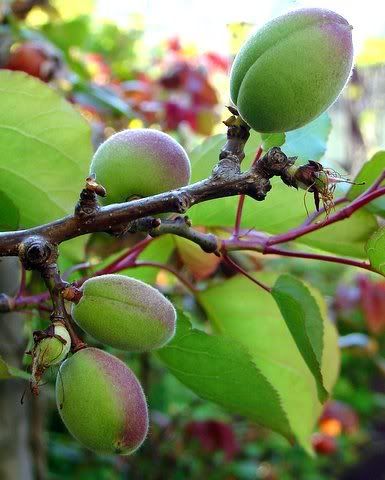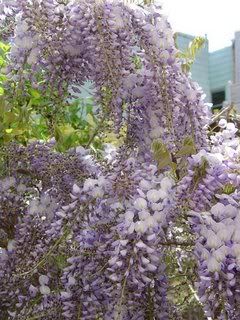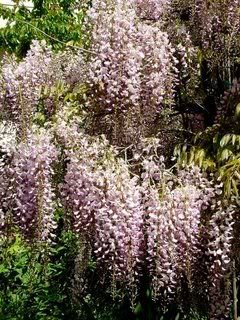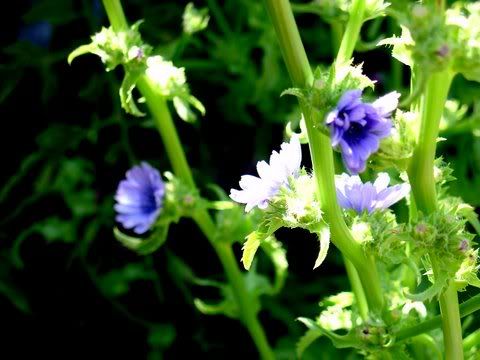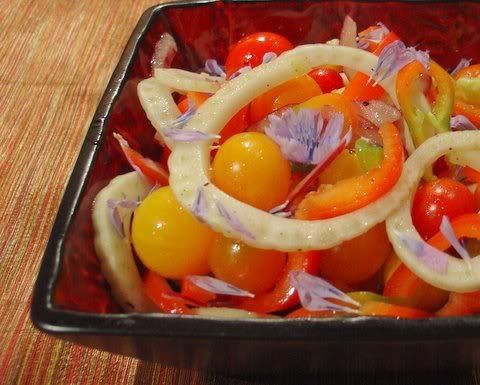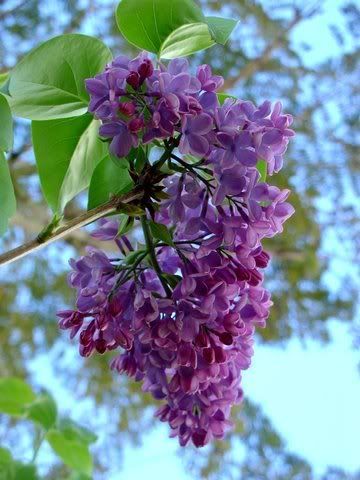
Friday, March 28, 2008
Spring Is Bustin' Out All Over

Cherry Tree Bursting With Bloom
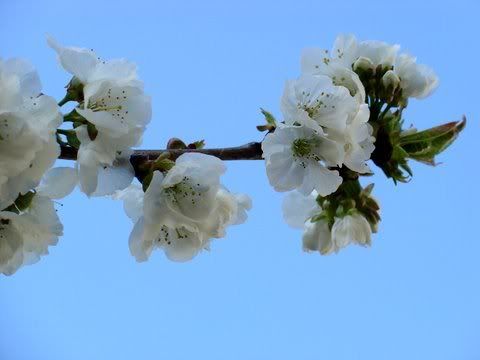
Don't want to count my cherries before they're picked, but this is one full cherry tree, laden with blossoms. Only the lower more horizontal branches are in bloom this week, but the vertical branches are pregnant with potential (loaded with buds). I'm already collecting 1 liter water bottles to use for "sleeves" to cover the lower branches and keep the birds from carrying off my prized cherries.
Last year ravens started to discover our neighborhood and I caught them in the act of stripping my tree, fruit by fruit. They would fly right into it picking off the cherries one by one as they flew off and through the tree. It wouldn't be so troublesome if they'd confine their raids to the branches I can't get to, but they go for the lower limbs too.
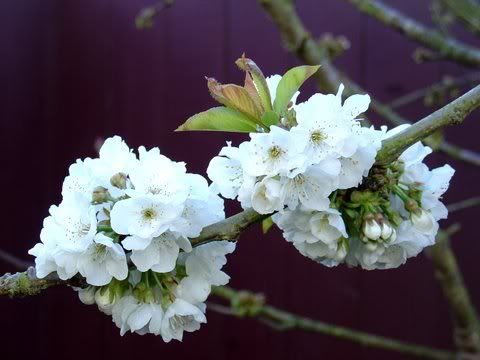
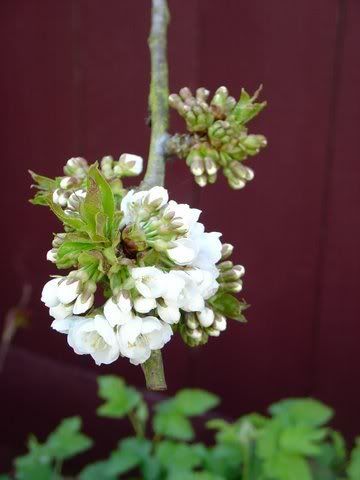
Blossom fragrance is lovely, each fruit blossom is a light version of the fruit aroma itself. I wish someone would bottle cherry blossom or nectarine.
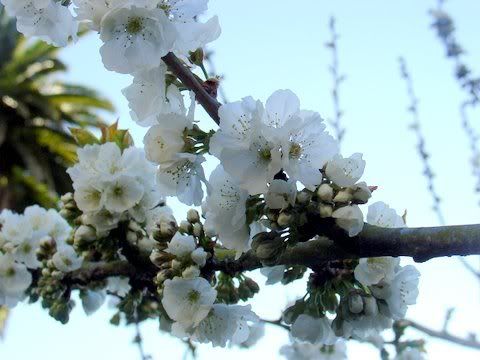
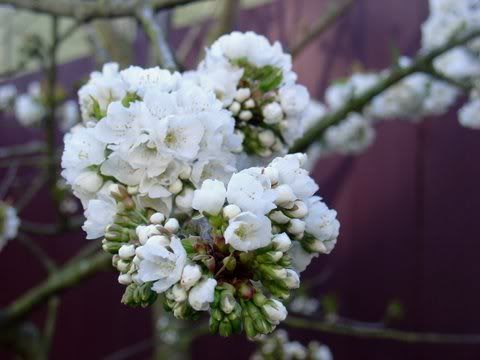
Another Harbinger of Spring
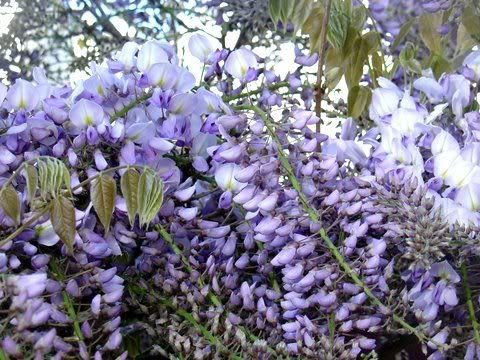
This is the same wisteria I photographed a week or so ago in the early bud stage. It amazes me how quickly this plant blooms, then fades untill nothing is left but the leaves that are starting to unfurl in this photo. The fragrance is magnificant, so I'm hoping for warm weather this weekend, so I can smell it throughout the garden during my last, grand weed purge.
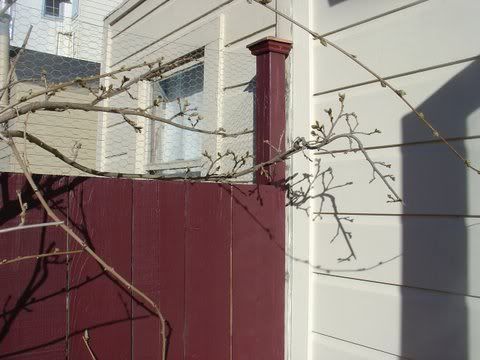
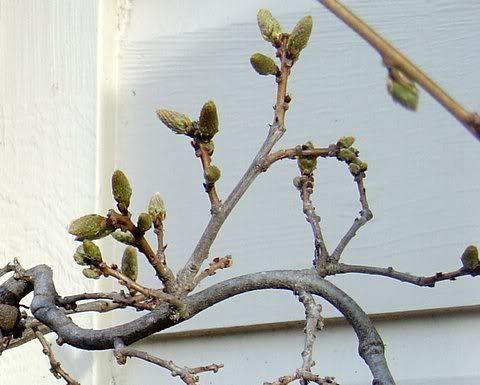
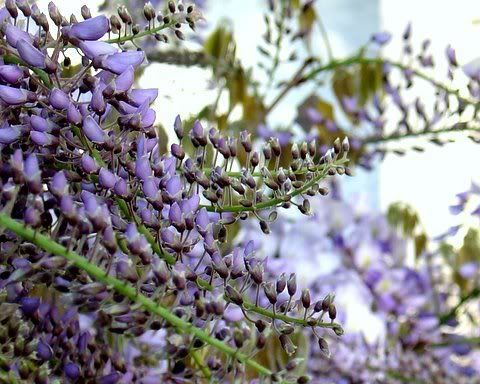
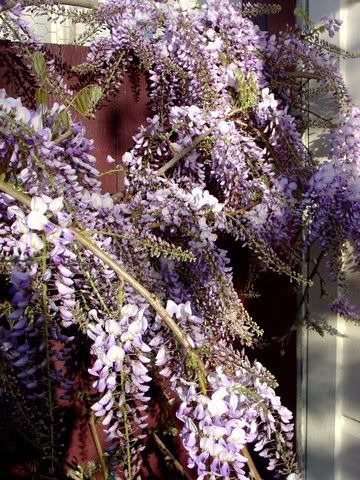
Gypsy Farewell
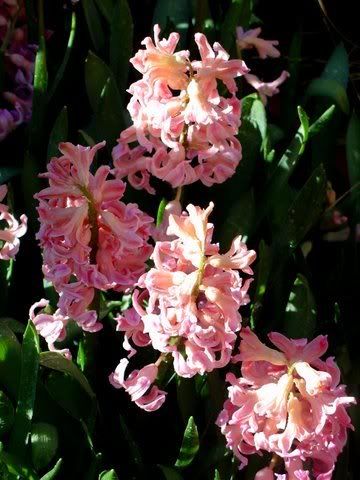
Dutch Iris, A Reliable Bloomer
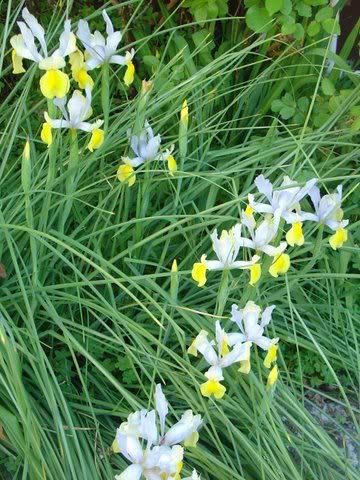
The long, blade like leaves provide a nice textural contrast to smaller leafed plants, and add a bit of architecture to the planting beds as well. They do well with a bit of guidance such as staking, tying, or being planted behind a short fence or trellis. Even being left to their own devices can result in a beautiful cascade of flowers, as seen in the photo above. Plants on the lower left had fallen over, but the blooms heated upward, and a lovely curve of flowers developed.
Monday, March 24, 2008
Katy, What a Sweetheart!
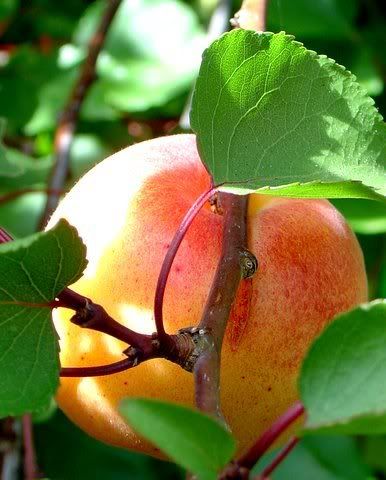
I just love this photo, where the branch scars the fruit.
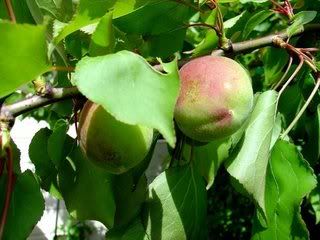
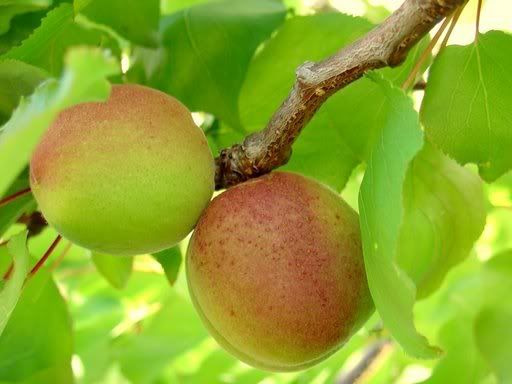
As long as I'm on the subject of the apricot tree, I may as well go into a bit more detail. The cultivar is called Katy and is good for areas that do not get much cold weather. It only needs 300 hours per year of weather lower than 45 degrees to set it's blossoms. The first few years there was no fruit at all. I was beginning to think I would never see any fruit on that tree, but in 2006 there were a few apricots that I wrestled from the birds. Last year the tree really went wild and was loaded with fruit. The fruit were plump and very large, looking almost like peaches. February's cold snap will definitely be a good thing for this particular tree. And, yes, the fruit does have a sweet heart, with just enough tang for the perfect apricot taste.
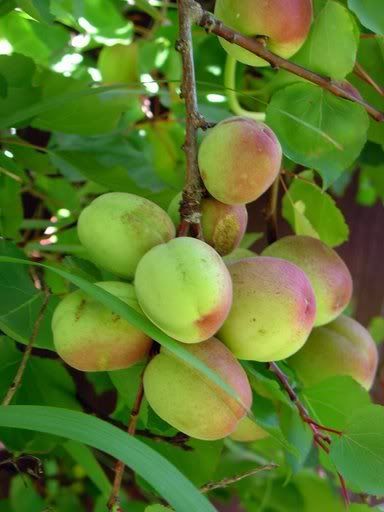
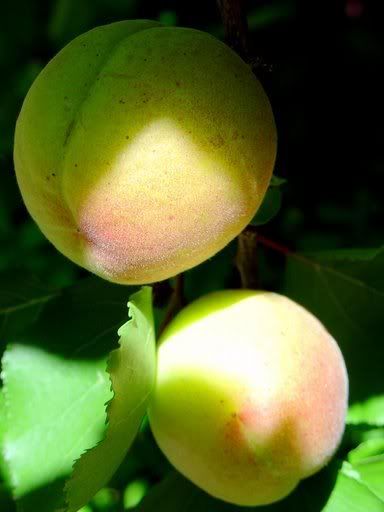
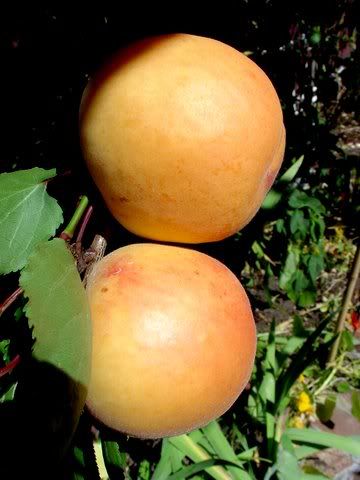
Houston, We Have Lift Off
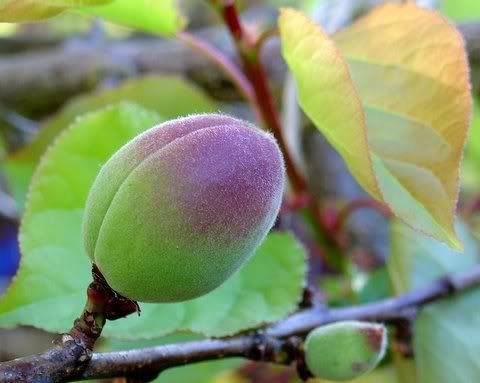
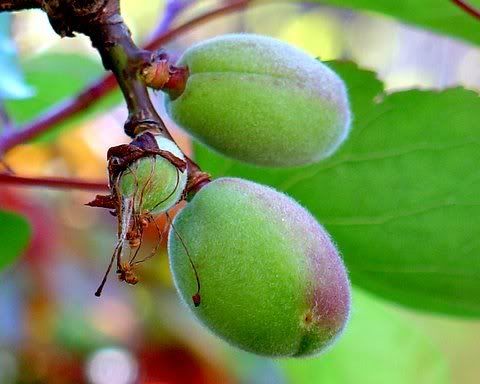
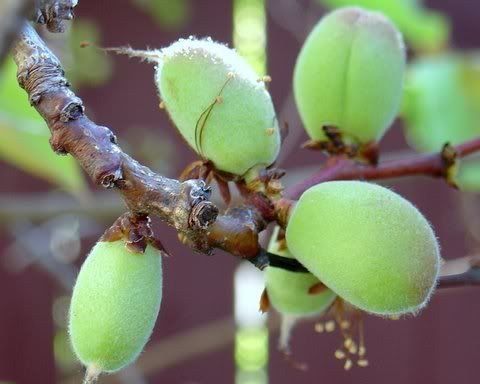
Tuesday, March 18, 2008
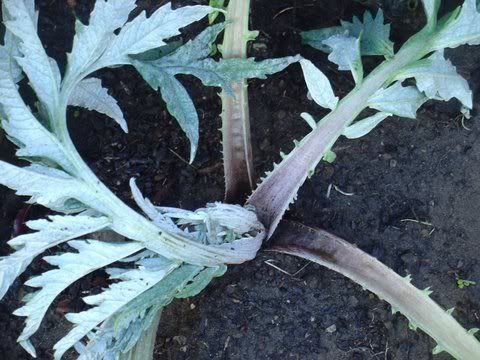
Saturday, March 15, 2008
America...the Beautiful
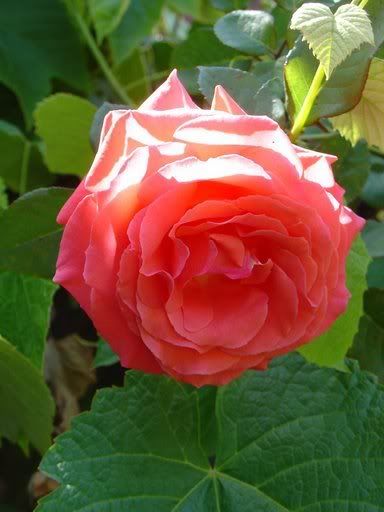

Friday, March 14, 2008
More Tulip Tips

Just on the off chance that you bought bulbs to plant and no one managed to sell you bone meal at the same time, my garden buddy reminds me to suggest it as a necessity for planting success. When planting flower bulbs, a teaspoon of bone meal mixed into the soil, under the bulb, will work miracles. It gives your bulbs the opportunity to grow strong roots and bigger blooms.
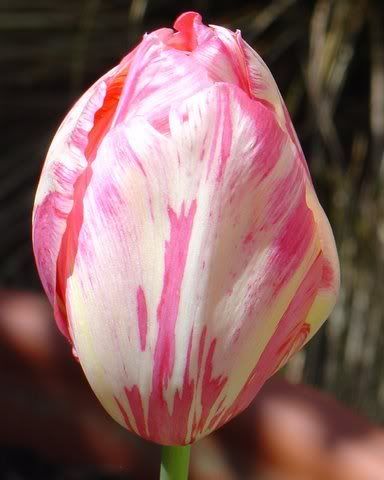
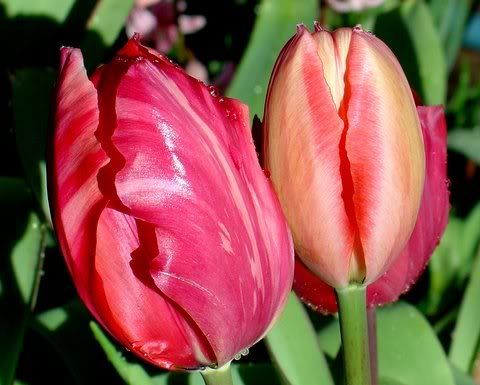
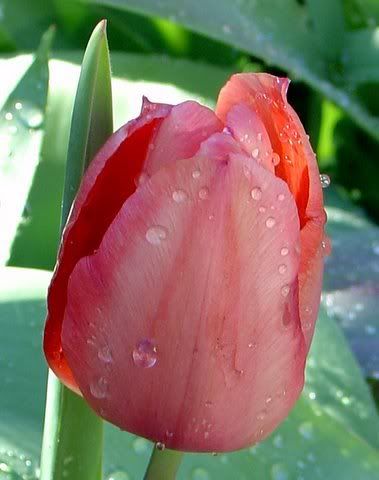
Optimum time for planting bulbs for spring here in San Francisco is October, but we also need to refrigerate tulips for 6-8 weeks, so mine always get a late start. This year I planted during the last week in February, so we can see if the bone meal did any good; small shoots are already appearing. An overwintered bulb in the ground always out performs a bulb planted in the early spring.
As the bulbs bloom and start to fade, clip off the flowers, and add more bone meal to the soil, so your bulbs spend their energy storing nutrients for next year instead of trying to form seeds. Allow the leaves to die back for the best results next year, as the bulb stores starches made through the photosynthesis that occurs in the leaves.
Another Diabolical Plot Brewing
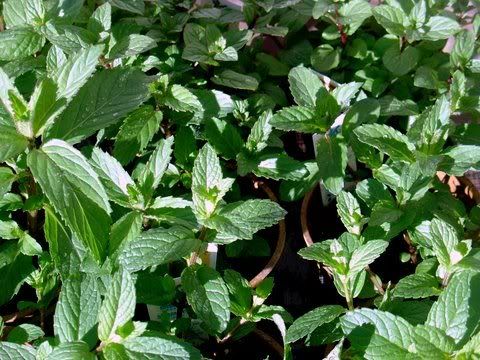
Everyone and their brother has warned me about the voracious appetite mint has for claiming new territory, but that is no deterrent for my plan. I use so much mint in cooking that I can easily trim off any mint invading other areas of lesser desirability (for me). I'm going to insert a barrier on the one side where it may become problematic. The rest of the space is limited by a fence and brick pathway.
Speaking of brewing, mint makes a great tea.
Wednesday, March 12, 2008
Wisteria on the Way

Dew Drops
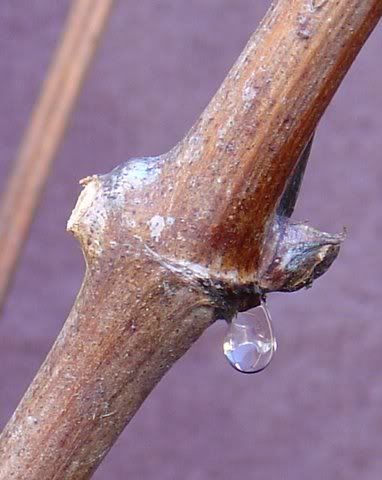
How can one little drop of water turn into an event? Only a gardener would know. I ran for the camera when I saw nature's little earring, a glistening jewel, hanging from my Zinfandel vine. I know I'm making too much fuss over a dew drop, but it's things like this that keep me interested in being in the garden, searching out small treasures left by nature in my little plot.
I've done some urban archeology in the garden over these past 14 years and have found that children once shared this space. Yesterday I found part of an old cap gun, and I still keep the marbles and small bottles they left behind.
Tuesday, March 11, 2008
Home Grown Lettuce

I'll Take Purple Osaka Mustard, Hold the Mayo
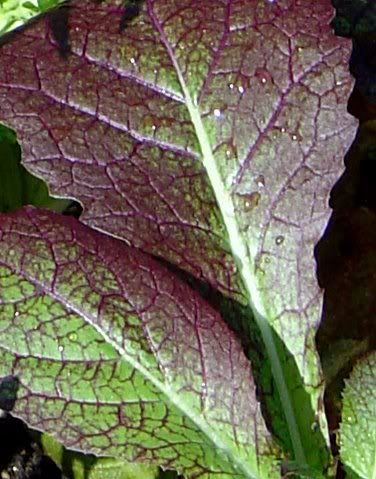
Monday, March 10, 2008
Another Great Trick For Tomatoes
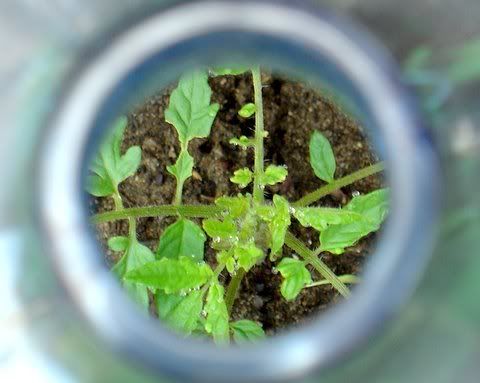
Since San Francisco can fail to have enough consistent heat for larger tomatoes, I usually content myself with short season varieties and cherry tomatoes. They are the perfect solution since they mature and start fruiting in 52 - 65 days from the transplant date. But I secretly long for cultivars like Hawaiian Pineapple, Purple Calabash, and the larger variety of paste tomatoes. What to do? If I set tomato plants out too early they do not have enough heat to thrive and will end up becoming weak plants. If I wait for the optimum time, they suffer in our foggy late summer weather.
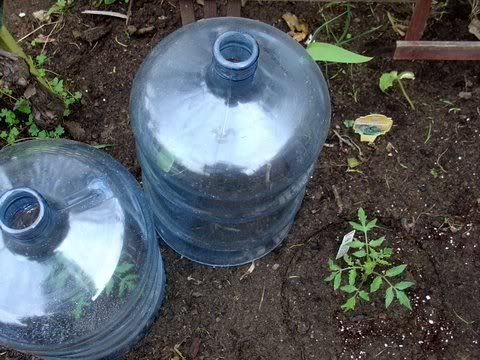
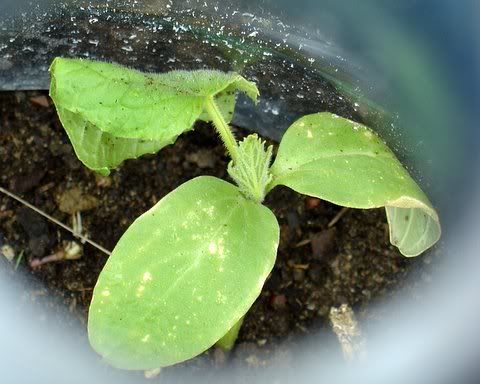
I priced "Wall O' Water" and it was too expensive for the number of plants I wanted to grow. I tried building little tents with plastic sheeting, but they were awkward and blew over in a gusty wind. One day as the water delivery man walked into work, I realized that he was carrying the answer to my dilemma over his shoulder. I asked how much the water company charged for bottles and it was reasonable enough for me to consider buying a few for a test. I had the bottoms cut off by a friend and tried them as cloches.
Last Spring I used them on several tomato plants and indeed, they grew very well and faster than their counterparts that had to fend off the cold without any help. This year I'm being more scientific in my testing and trying them on identical cultivars to see if the protected plant outgrows its twin. The test is also being conducted on a Japanese cucumber and when the seedling germinates, a melon.
Sunday, March 9, 2008
Sunset Celebration...the Rose
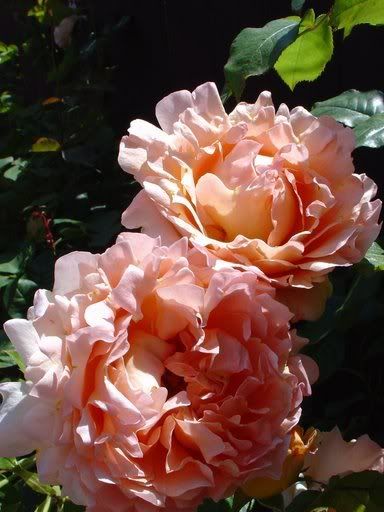
Another lovely apricot/peach colored rose is Sunset Celebration, developed by Jackson Perkins, I believe for the 50th anniversary of Sunset Magazine. The ruffled petals are the main feature that attracted me to purchase this rose. The fragrance and color are the other all important features that allow this cultivar to meet my "criteria" for a place in the garden. I can't recall how tall this plant should be, but it easily reaches 7', even though I doubt is was supposed to be a climber.
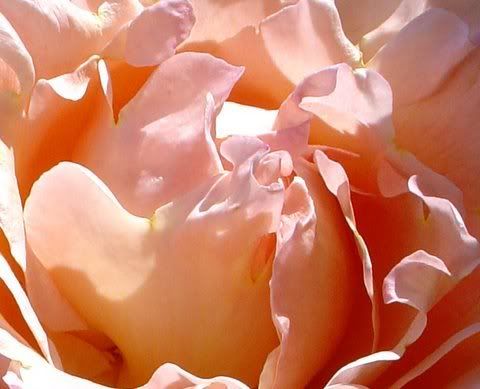
Friday, March 7, 2008
Hugarian Bread Seed Poppy
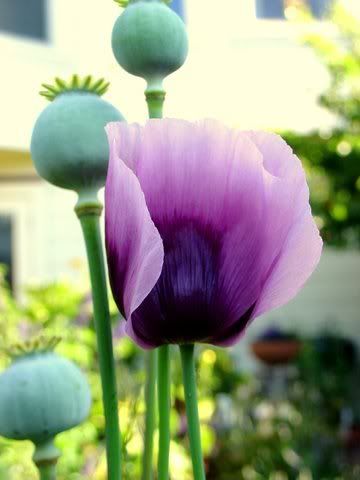
Last spring I planted some Hungarian bread seed poppies, a light lilac poppy that stands about 3 1/2' tall, as I have done for the past 5 years or so. The poppy seeds from this cultivar are so rich and nutty tasting, that they seldom make it out of the yard into the kitchen. I saved the seeds and am planning on planting them soon in mass, so I can finally get enough seed to save some for baking.
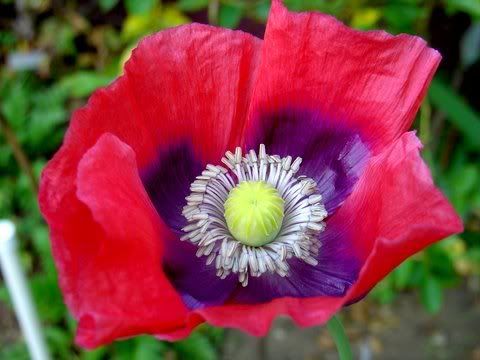
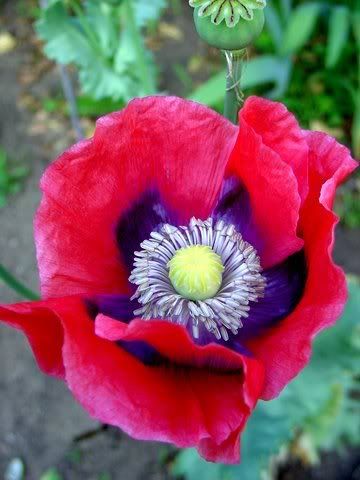
This was the bonus I received last summer when my plants started flowering. I don't know if it was a sport of Hungarian Bread Seed Poppy or a mismarked plant, but the colors were so joyful it really didn't matter. I didn't save the seeds from the pods of this particular plant, so I won't be guaranteed another like it, but I'm happy to enjoy it again in these photos.
There Are 2... 2... 2 Tricks in 1
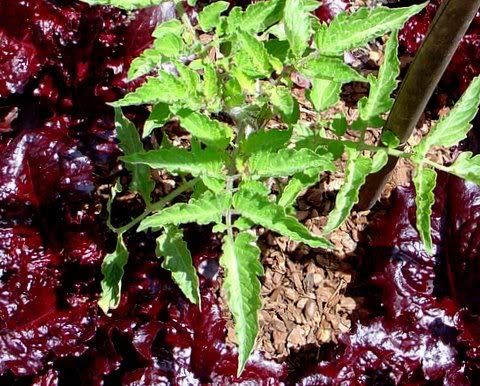
Please ignore the fact that the title is based on a Double Mint gum TV commercial...there is no mint involved in this post. I just wanted to pass along an effective way to eliminate soil borne fungal diseases in tomatoes. Since we need to water tomatoes frequently, we increase our chances of splashing soil onto the leaves and that is how tomato plants "catch" fungal diseases.
Once I discovered that little bit of information I decided to do something about it. When planting tomato starts, I cover the surrounding dirt with 2 inches of cedar bark mulch. This method helps a lot, but adding lettuce plants around the mulch circle decreases the likelyhood of slpashing dirt onto your tomato plant even further. It's a good use of garden space too.
Making Peace With Your Enemy
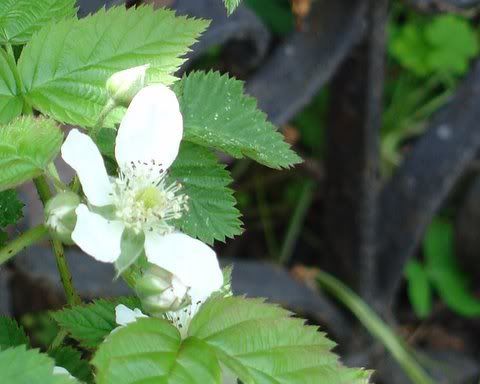
When we first saw our home, I was delighted to discover that the yard was completely devoid of plantings. The garden space was very large for San Francisco at 25' X 55'; most lots are only 25' X 100'. It also had full southern exposure. I was looking forward to designing my own garden, so there was no plant or tree to be eliminated or moved.
After the purchase, I paid attention to the sunshine and how it moved through the yard for the first year. I discovered perfect places to plant my fruit trees for optimal sun exposure that way. In the late afternoons a neighbor's tree shades part of the yard, so that area was saved for my two Japanese maples that would do well in dappled sunlight. In the interim, the purchase of large clay pots made do for homes to the plants I just couldn't wait to buy. Hard scape went in after we pulled out two old chimneys and recycled the used brick. During the first year I also discovered many old granite cobbles that had been buried under all the weeds, so they were used to create a retaining wall for the middle patio since the lot slopes to the south.
I had not noticed for a few months that we actually did have a few plants, wild blackberries. They grow along the highways and byways of Northern California and are considered weeds by most people. Since I used to gather wild berries for making jam, I thought it might be nice to keep them, until they started spreading. I started pulling them out, but they would return each year. Then I dug up the roots, but they still returned and would sneak in under the fence from my neighbor's unkempt yard. I sprayed them, hacked at them, screamed at them when they'd "bite" me with those pesky thorns, and cut them back each year.
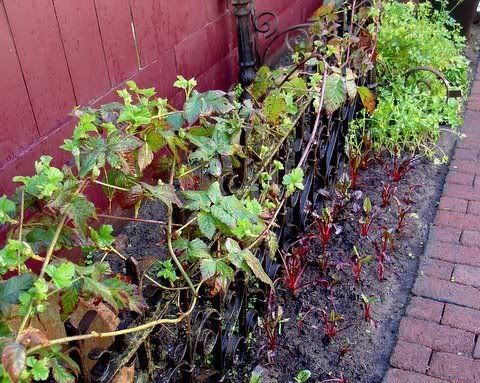
They were tenacious! What was I to do? As luck would have it, I was gifted with a 9' X 2 1/2' ironwork fence and decided to make peace with the berry vines. I staked the fence in front of some fruit trees in the back of the garden, directly in front of the most egregious berry patch and worked the canes through the fence, weaving them in and out of the ironwork. Today it represents a truce between me and my greatest garden nemesis. It also looks lovely and the birds share the berries with me.
